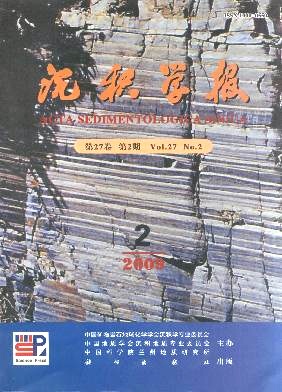The Petrologic Rhythm of Lower Ordovician Penglaiba Formation Encoun tered by Well Tazhong 19 and New Dolomitization Model, Tarim Basin
- Received Date: 1900-01-01
- Rev Recd Date: 1900-01-01
- Publish Date: 2009-04-10
-
Key words:
- Penglaiba Formation /
- dolomitization /
- up erosion mode /
- petrologic rhythm
Abstract: In the lower Ordovician Penglaiba Formation of Tarim basin occur thick strata of interbeded dolostone and limestone, which show a relatively constant petrologic rhythm in Tazhong19 well: three parts can be observed in every rhythm, the upper part is microlite limestone, middle part is dolostone, and lower part is siliceous granular limestone. The geochemical research on the limestones and dolostones show: 1) compared with limestones, dolostones are enriched in most of trace elements. Dolostones show a higher content of total rare earth elements than limestones but similar PAASnormalized patterns were demonstrated between limestones and dolostones, which indicates that the rare earth elements in dolostones might have come from limestones by dolomitization. 2) There are two dolomitization events and the productions are Barich dolostones and Bapoor dolostones, respectively. Ba content in Barich dolostone is as high as 2 312×10-6. Meanwhile, high sulfur concentrations were demonstrated in Barich dolostones, which indicate that the Formation of Ba in dolostones is hydrothermal BaSO4. High Fe, Mn content in Barich dolostones also showed the hydrothermal origin of dolomitization fluid. 3) An obvious difference in carbon and oxygen isotope composition was shown between Barich dolostone and Bapoor dolostone. The carbon isotope compositons in Barich dolostone were similar to limestones, with values ranging from 2.5‰~2.3‰, but a higher oxygen isotope with value ranging from 6.0‰~3.2‰, maybe as a result of dolomitization by magmatic hydrothermal fluid; In Bapoor dolostone, δ18O values vary in a lower range of9.7‰~8.5‰, and a higher range of 1.7‰~1.5‰ for carbon isotope compositions, maybe as a result of dolomitization by evolved hydrothermal seawater; 4) 87Sr/86Sr values of dolostones vary in 0.708 914~0.709 409, higher than limestones (0.708 983~0.709 039), maybe as a result of the later diagenesis alternations. Because of the spatial relations between microlite limestone and dolostones, the dolomitization fluids can not penetrate the limestone to dolostone layers, therefore, the dolomitizations fluids must have originated from deep hydrothermal fluid. By some cleavage or tectonic movement the hydrothermal fluids upwelled, encountered the microlite limstones and started dolomitization along the bottom of limestones. We can define the model as “up erosion model”, by which the dolostones and the upper limestone will construct very good reservoircover combinations.
| Citation: | CHEN Yongquan. The Petrologic Rhythm of Lower Ordovician Penglaiba Formation Encoun tered by Well Tazhong 19 and New Dolomitization Model, Tarim Basin[J]. Acta Sedimentologica Sinica, 2009, 27(2): 202-211. |






 DownLoad:
DownLoad: